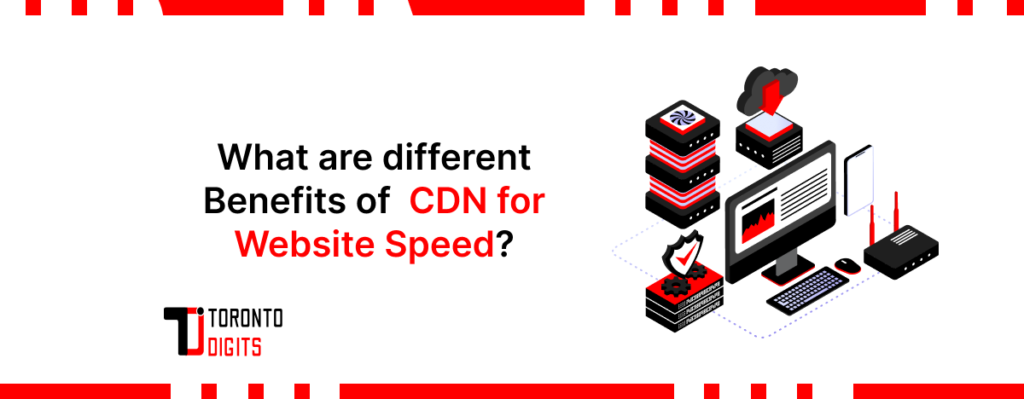Website speed is a crucial factor in the digital landscape. Speed impacts everything from user experience to conversion rates and search engine visibility. That’s why integrating speed strategies like a Content Delivery Network (CDN) is a game-changer, especially for high-traffic platforms like news portals, blogs, and digital magazines.
By strategically distributing your website’s content across a vast network of servers worldwide, CDNs can dramatically reduce latency, improve loading speeds, and enhance the overall user experience. In this comprehensive guide, we’ll explore the various benefits of CDNs for website speed and how they can revolutionize the way you deliver content to your users.
The Role of Speed in SEO
Page speed is now a confirmed ranking factor in Google’s algorithm. That means faster sites get more visibility, more traffic, and more engagement. CDNs contribute to better Core Web Vitals scores, which are critical for SEO success. Faster sites lead to lower bounce rates and higher dwell times—two behavioral signals search engines love. If you’re serious about organic growth, it’s time to treat speed’s role in SEO as a top priority.
Speed Audit: Know Before You Optimize
Before implementing any performance solution, run a thorough speed audit using tools like Google PageSpeed Insights, GTmetrix, or WebPageTest. A speed audit identifies your current bottlenecks—whether it’s unoptimized images, render-blocking JavaScript, or slow server response times—and shows how a CDN can help.
Security Benefits of a CDN
CDNs aren’t just about performance—they also enhance your website’s security posture. One of the key security benefits of CDN usage is DDoS protection. Many CDNs come with built-in firewalls, bot filtering, and TLS/SSL support to secure your data and reduce the risk of attacks.
For publishers managing large volumes of content and user interaction, these security layers are essential.
Understanding Content Delivery Networks:
A Content Delivery Network (CDN) is a globally distributed network of servers designed to deliver web content efficiently to users based on their geographic location. Instead of hosting all your website’s content on a single server, a CDN replicates and caches your static assets (such as images, CSS, and JavaScript files) across multiple edge servers strategically located around the world.
When a user requests content from your website, the CDN automatically routes the request to the nearest edge server, ensuring that the content is delivered from the closest possible location. This proximity reduces latency, resulting in faster load times and an improved user experience.
CDNs come in various forms, including cloud CDNs, private CDNs, hybrid CDNs, and multi-CDN strategies. Each type offers unique advantages and can be tailored to meet the specific needs of your website and business requirements.
Read more on Website Load Speed
Key Benefits of CDNs for Website Speed:
- Latency Reduction: By serving content from servers closest to the user, CDNs significantly reduce latency, the time it takes for data to travel between the server and the user’s device. This translates into faster loading times, lower bounce rates, and increased conversion rates, as users are less likely to abandon a website that loads quickly.
- Caching: CDNs employ intelligent caching mechanisms to store static content, such as images, CSS, and JavaScript files, on edge servers closer to users. When a user requests these cached assets, they are served directly from the edge server, eliminating the need to fetch them from the origin server and reducing load times.
- Geographic Distribution: With edge servers strategically located around the globe, CDNs can deliver content to users worldwide with minimal latency, ensuring a consistent and fast user experience regardless of the user’s geographic location.
- Bandwidth Optimization: By caching and serving content from edge servers, CDNs significantly reduce the bandwidth demands on your origin server, leading to lower hosting costs and improved scalability. Additionally, CDNs can optimize content delivery through techniques like compression and minification, further reducing bandwidth usage.
- Load Balancing: CDNs employ load-balancing techniques to distribute traffic across multiple servers, ensuring fault tolerance and high availability. If one server experiences an issue or becomes overloaded, the CDN can automatically route traffic to another server, minimizing downtime and ensuring a seamless user experience.
- Scalability: With their globally distributed infrastructure, CDNs can easily handle traffic spikes and peak loads, ensuring that your website remains responsive and fast, even during periods of high demand.
- Asset Optimization: Many CDNs offer advanced asset optimization features, such as image optimization, minification, and compression, further enhancing website performance and reducing load times.
- Content Purging: CDNs enable efficient content purging, allowing you to update cached content across the entire network with a single click, ensuring that users always receive the latest version of your website’s assets.
- Security Features: CDNs often provide built-in security features like DDoS protection, SSL/TLS offloading, web application firewalls (WAFs), and bot management, safeguarding your website from potential threats and ensuring a secure environment for your users.
CDN Best Practices and Considerations:
To fully leverage the benefits of CDNs for website speed, it’s essential to consider the following best practices and factors:
- CDN Provider Selection: Choose a reputable and reliable CDN provider that aligns with your website’s needs, traffic patterns, and budget. Consider factors such as geographic coverage, pricing models, performance metrics, and additional features like security and analytics.
- Content Optimization: Optimize your website’s content by implementing techniques like minification, compression, and image optimization to further reduce file sizes and enhance delivery speeds.
- CDN Monitoring and Analytics: Regularly monitor your CDN’s performance using analytics tools and adjust settings or configurations as needed to ensure optimal performance.
- Advanced CDN Features: Explore advanced CDN features like video streaming, live streaming, mobile optimization, and content targeting to further enhance the user experience and cater to specific use cases or audiences.
CDN for Publishers: A Perfect Match
CDN for publishers isn’t just about speed—it’s about delivering rich media, breaking news, and editorial content to a global audience without delay. Publishers benefit from real-time content replication, traffic spikes management, and zero downtime during peak hours. CDNs help maintain the user experience even when content is constantly being updated.
Whether you run a news site, a digital magazine, or a content-heavy blog, a CDN supports your need for speed, scalability, and security.
Let’s Wrap it up
Optimizing website speed is essential for ensuring a seamless and engaging user experience. Content Delivery Networks (CDNs) offer a comprehensive solution to address this critical aspect of web performance. By leveraging the power of CDNs, you can unleash your website’s full potential, delivering lightning-fast load times, reducing latency, and providing a seamless user experience to visitors worldwide.
From latency reduction and caching to geographic distribution and scalability, CDNs offer a multitude of benefits that can revolutionize your website’s performance. By following CDN best practices and carefully selecting the right provider, you can future-proof your website, stay ahead of the competition, and ensure that your users enjoy a truly exceptional online experience.
Speed matters. And speed strategies like using a CDN are no longer optional—they’re foundational. From conducting a proper speed audit, understanding speed’s role in SEO, to reaping the security benefits of CDN, this is your roadmap to building a faster, safer, and more reliable web presence.
For publishers, the right CDN can be the backbone of content delivery success, helping you serve your audience better, wherever they are.
Embrace the power of Content Delivery Networks and unlock new levels of website speed and performance today.




